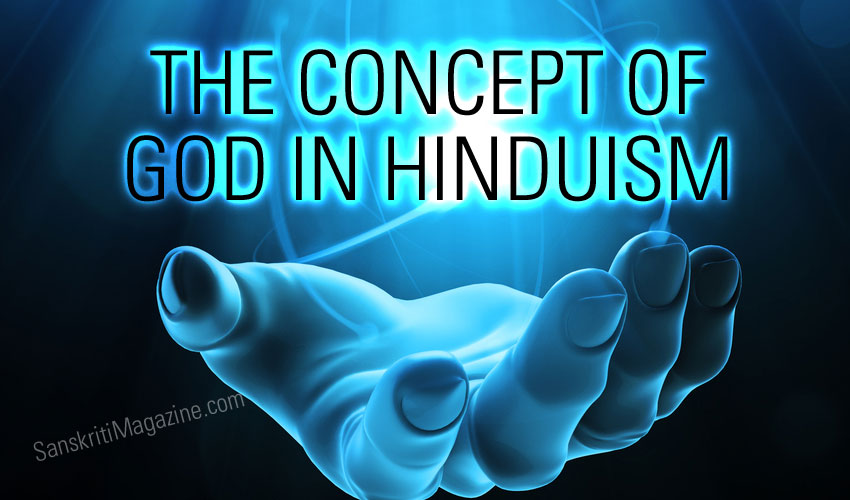The earliest statement of the Nature of Reality occurs in the first book of the Rig-Veda: Ekam Sat-Viprah Bahudha Vadanti. “The ONE BEING, the wise diversely speak of.”
The tenth book of the Rig-Veda regards the highest conception of God both as the Impersonal and the Personal: The Nasadiya Sukta states that the Supreme Being is both the Unmanifest and the Manifest, Existence as well as Non-existence, the Supreme Indeterminable.
The Purusha-Sukta proclaims that all this Universe is God as the Supreme Person – the Purusha with thousands of heads, thousands of eyes, thousands of limbs in His Cosmic Body. He envelops the whole cosmos and transcends it to infinity.
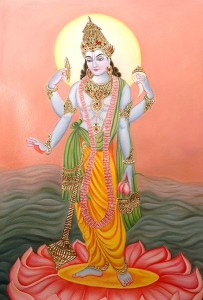 The Narayana-Sukta exclaims that whatever is anywhere, visible or invisible, all this is pervaded by Narayana within and without.
The Narayana-Sukta exclaims that whatever is anywhere, visible or invisible, all this is pervaded by Narayana within and without.
The Hiranyagarbha-Sukta of the Rig-Veda declares that God manifested Himself in the beginning as the Creator of the Universe, encompassing all things, including everything within Himself, the collective totality, as it were, of the whole of creation, animating it as the Supreme Intelligence.
The Satarudriya or Rudra-Adhyaya of the Yajur-Veda identifies all things, the high and the low, the moving and the unmoving, the good and the bad, the beautiful and the ugly, nay, every conceivable thing, with the all-pervading Siva or Rudra as the Supreme God.
The Isavasya Upanishad says that the whole Universe is pervaded by Isvara or God, who is both within and without it. He is the moving and the unmoving, He is far and near, He is within all these and without all these.
The Kena Upanishad says that the Supreme Reality is beyond the perception of the senses and the mind because the senses and the mind can visualise and conceive only the objects, while Reality is the Supreme Subject, the very precondition of all sensation, thinking, understanding, etc. No one can behold God because He is the beholder of all things.
The Kathopanishad has it that God is the Root of this Tree of world existence. The realisation of God is regarded as the Supreme blessedness or Shreyas, as apart from Preyas or temporal experience of satisfaction.
The Prasna Upanishad says that God is the Supreme Prajapati or Creator, in whom are blended both the matter and energy of the Universe. God is symbolised in Pranava, or Omkara.
The Mundaka Upanishad gives the image of the Supreme Being as the One Ocean into which all the rivers of individual existence enter and with which they become one, as their final goal.
The Mandukya Upanishad regards the Supreme Being as the Turiya, or the Transcendent Consciousness, beyond the stales of waking, dreaming and deep sleep.
The Taittiriya Upanishad regards the Reality as the Atman, or the Self, beyond the physical, vital, mental, intellectual and causal aspects(sheaths) of the personality. It also identifies this Atman with the Supreme Absolute, or Brahman.
The Aitareya Upanishad states that the Supreme Atman has manifested itself as the objective Universe from the one side and the subjective individuals on the other side, in which process, factors which are effects of God’s creation become causes of individual’s perception, by a reversal of the process.
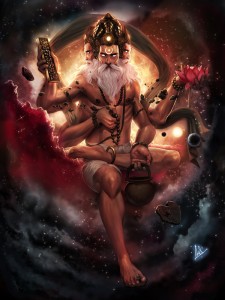 The Chhandogya Upanishad says that all this Universe is Brahman Manifest in all its states of manifestation. It regards objects as really aspects of the one Subject known as the Vaishvanara-Atman. It also holds that the Supreme Being is the Infinite, or Bhuma, in which one sees nothing else, hears nothing else, and understands nothing else except the Self as the only, existence.
The Chhandogya Upanishad says that all this Universe is Brahman Manifest in all its states of manifestation. It regards objects as really aspects of the one Subject known as the Vaishvanara-Atman. It also holds that the Supreme Being is the Infinite, or Bhuma, in which one sees nothing else, hears nothing else, and understands nothing else except the Self as the only, existence.
In the Brihadaranyaka Upanishad we are told that the Supreme Being is Pure Consciousness, in which subjects and objects merge together in a state of Universality.
The Supreme Being knew only Itself as ‘I-Am’, inclusive of everything. As He is the Knower of all things, no one can know Him, except as ‘He Is’.
The Svetasvatara Upanishad says, ‘Thou art the Woman’, ‘Thou art the Man’, ‘Thou art Girl’, ‘Thou art Boy’, ‘Thou deceivest us as the old man tottering with the stick’, ‘Thou movest everywhere, in the form of everything, in all directions’, ‘Thou art the dark-blue Butterfly, and the Green Parrot with red eyes’, ‘Thou art the thunder cloud, the Seasons and the Oceans’, ‘Thou art without beginning and beyond all time and space’, ‘Thou art That from which all the Universes are born’. ‘That alone is Fire. That is the Sun. That is Air, That is the Moon, That is also the starry firmament, That is the waters, That is Prajapati, That is Brahman.’
That Divine Being, who, though Himself formless, gives rise to various forms in different ways with the help of His Supreme Power for His own inscrutable purpose, and Who dissolves the whole Universe in Himself in the end – may He endow us with pure understanding.
He is the Great Being who shines effulgent like the Sun, beyond all darkness. Knowing Him alone one crosses beyond death. There is no other way of going over there.
The One God, Creator of the heaven and earth, is possessed of all eyes, all faces, all hands, and all feet in this Universe. It is He who inspires all to do their respective functions, as if fanning their fire into flames of movement.
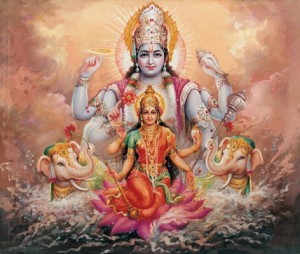 Manu says in his Smriti: In the beginning, all this existence was one Undifferentiated Mass of Unmanifestedness, unknown, indefinable, unarguable and unknown in every way. From this Supreme Condition arose the Universe of name and form, through the medium of the Self-existent Creator, Swayambhu.
Manu says in his Smriti: In the beginning, all this existence was one Undifferentiated Mass of Unmanifestedness, unknown, indefinable, unarguable and unknown in every way. From this Supreme Condition arose the Universe of name and form, through the medium of the Self-existent Creator, Swayambhu.
The Mahabharata says that Narayana alone was in the beginning, who was the prius of the creative, preservative, and destructive principles, the Trinity known as Brahma, Vishnu and Siva – the Supreme Hari, multi-headed, multi-eyed, multi-footed, multi-armed, multi-limbed. This was the Supreme Seed of all creation, subtler than the subtlest, greater than the greatest, larger than the largest, and more magnificent than even the best of all things, more powerful, than even the wind and all the gods, more resplendent than the Sun and the Moon, and more internal than even the mind and the intellect. He is the Creator, the Father Supreme.
The Bhagavadgita in the Mahabharata, says: The Supreme Brahman is beyond existence and non-existence. It has hands and feet everywhere, heads, mouths, eyes everywhere, ears everywhere, and it exists enveloping everything. Undivided, it appears as divided among beings; attributeless, it appears to have attributes in association with things. It is the Light of all lights, beyond all darkness, and is situated in the hearts of all beings.
He is the sacrifice, He is the oblation, He is the performer thereof, He is the recitation or the chant, He is the sacred fire, He is what is offered into it. He is the father, the mother, the grandfather, the support, the One knowable Thing, He is the three Vedas, the Goal of all beings, the Protector, the Reality, the Witness, the Repository, the Refuge, the Friend, the beginning, the middle and the end of all things. He is immortality and death, existence as well as non-existence. He is the Visvarupa, the Cosmic Form, blazing like fire and consuming all things.
According to the Bhagavata and the Mahabharata, God especially manifested Himself as Bhagavan Sri Krishna, who is regarded as the foremost of the divine Incarnations, in whose personality the Supreme Being is fully focussed and manifest.
Srimad Bhagavata says: He is Brahman (the Absolute), Paramatman (God), Bhagavan (the Incarnation).
According to the Pancharatra Agama and the Vaishnava theology, God has five forms: the Para or the Transcendent, Antaryamin or the Immanent, Vyuha or the Collective (known as Vasudeva, Sankarshana, Pradyumna and Aniruddha), Vibhava or the Incarnation, and Archa or the symbolic form of daily worship.
According to Saiva tradition, God is Pati, the Lord who controls the individuals known as Pasu, with His Power known as Pasa.
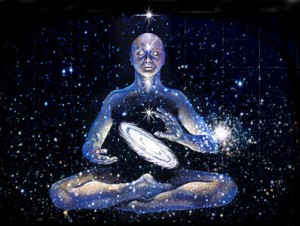 According to the Sakta tradition, God is the Divine Universal Mother of all things, Adi-sakti, or the original Creative Power, manifesting Herself as Kriya-Sakti or Durga, Ichha-Sakti or Lakshmi, and Jnana-Sakti or Sarasvati. But the Supreme Mother is beyond all these forms. She is One, alone, without a second.
According to the Sakta tradition, God is the Divine Universal Mother of all things, Adi-sakti, or the original Creative Power, manifesting Herself as Kriya-Sakti or Durga, Ichha-Sakti or Lakshmi, and Jnana-Sakti or Sarasvati. But the Supreme Mother is beyond all these forms. She is One, alone, without a second.
According to the Bhakti tradition, God is the Supreme Object of Love, in respect of Whom love is evinced as in respect of one’s father, mother, friend, son, master, or one’s own beloved, in the five forms of affection, known as Shanta, Sakhya, Vatsalya, Dasya and Madhurya.
To the Vaishnavas, God is in Vaikuntha as Vishnu. To the Saivas, God is in Kailasa as Siva, or Rudra. To the Saktas, God is in Manidvipa, as the Supreme Sakti or the Divine Mother. To the Ganapatyas, God is Ganesa, or Ganapati. To the Sauras, God is Surya, the Sun. To the Kaumaras, God is Kumara, or Skanda.
To the saints like Tulasidas, God is Rama; to those like Surdas, He is Krishna. To those like Kabirdas, He is the Impersonal, Attributeless One, known by various names for purposes of worship and meditation.
All the Vaishnava saints worship Him as either Rama or Krishna, Narayana or Vishnu. The Saiva saints worship Him as Paramasiva. The Saktas worship Him as Adi-sakti. The philosopher-saints worship Him as Brahman, the Absolute, as Isvara, Hiranyagarbha, and Virat or the Cosmic Being.
The Virat-Saivas worship God as Siva, especially manifest as the Linga(symbolised in the rounded sacred stone which they wear round their necks).
The symbol of Vishnu is the Saligrama, the symbol of Siva is the Linga, and the symbol of Devi is the Yantra(sometimes, a Mantra).
According to the Nyaya and Vaiseshika schools, God is the instrumental cause of creation, like a potter fashioning a pot of clay, but not the material cause of creation.
The Samkhya school holds that there are only two Primary Principles, Purusha and Prakriti, and creation is only a manifestation or evolution of the constituents of Prakriti due to the action of Purusha’s consciousness. There is no other God than these two Principles.
The Yoga school of Patanjali accepts God’s existence as a Special Purusha free from all afflictions, Karma the effects of Karmas and impressions or potencies of a binding nature. But this Purusha, known as Isvara, according to Patanjali’s Yoga System, is not the creator of the world, but a Witness thereof. Nor is He the goal of the aspirations of the Jivas or individuals.
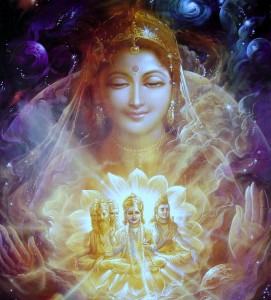 The Yogavasishtha defines Reality as the Consciousness which is between and transcends the subjective and objective aspects in perception and cognition, etc. Consciousness is the Absolute, Brahman, the only existence, of which the world is only an appearance.
The Yogavasishtha defines Reality as the Consciousness which is between and transcends the subjective and objective aspects in perception and cognition, etc. Consciousness is the Absolute, Brahman, the only existence, of which the world is only an appearance.
The Brahmasutra states that God is That from Whom this Universe proceeds, in Whom it subsists, and to Whom, in the end, it returns.
Kalidasa, in his Raghuvamsa and Kumarasambhava, points out that God is the Supreme Being, is prior to the forms of Brahma, Vishnu and Siva, who are three aspects or phases of God, and that Brahma, Vishnu and Siva, being three forms of one and the same Reality, are equal to one another in every respect, without inferiority or superiority among them.
Bhartrihari prays to that Infinite Consciousness, which is Peaceful Effulgence, which is undifferentiated by the interference of space, time and causal relation, etc., and whose essence is Self-Experience alone.
Madhusudana Sarasvati blends Advaita Vedanta and Bhakti-Rasa, and he is the author of the most polemical and authoritative Advaita text, known as the ‘Advaitasiddhi’, and of an unparalleled compendium of the various processes and stages of devotion to God, known as ‘Bhaktirasayana’. His commentary on the Bhagavadgita is a monument of a fusion of knowledge of the Impersonal Absolute with devotion to the Personal God.
Religions are founded on a metaphysical rock-bottom. There is a philosophical import behind every ethical canon.
Generally, the tradition of worship of Deities in India is according to a sort of protocol which the devotees associate with the importance of the Deities. For instance, worshippers of a particular Deity, such as Ganesa, Siva, Vishnu, Surya or Skanda, will place their own Deity as the first in importance and every other Deity as secondary. There is another tradition according to which the order of worship places Ganesa as the first, to be worshipped on any occasion, and then Devi, Siva, Vishnu, Surya and Skanda. This order may get slightly changed in different circles of religious belief. But the discourses recorded in this book do not follow any of these patterns but a chronological arrangement according to the festivals that come one after the other, seriatim, during the course of the calendar of the year, that is, from the beginning of the year to the end of the year. The functions and festivals repeat themselves every year on specific days or dates. Thus, the order in which the functions or the Deities of worship are mentioned here follow their calendar-wise chronology.
~ Swami Krishnananda

